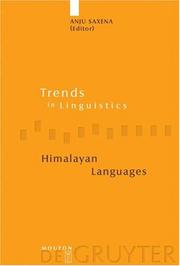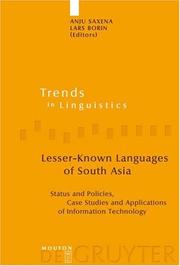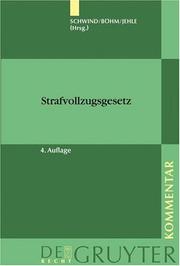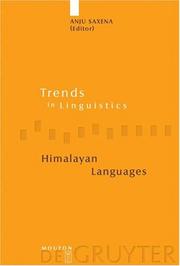| Listing 1 - 10 of 15 | << page >> |
Sort by
|

ISBN: 311089887X 9783110898873 3110178419 9783110178418 Year: 2004 Volume: 149 Publisher: Berlin ; New York : Mouton de Gruyter,
Abstract | Keywords | Export | Availability | Bookmark
 Loading...
Loading...Choose an application
- Reference Manager
- EndNote
- RefWorks (Direct export to RefWorks)
With its many and diverse languages, including some with very long documented histories, its great cultural diversity, and its widespread multilingualism - both the stable and transient kind - the Himalayan region is a treasure trove of empirical data for research on language typology and universals, historical linguistics, language contact and areal linguistics. Himalayan Languages contains an overview of Himalayan linguistics, synchronic studies of individual languages, and papers on the historical and areal linguistics of language families and languages in the region, contributed by some of the leading experts in the field.
Tibeto-Burman languages --- Himalayan languages --- Sino-Tibetan languages --- Chin languages --- Himalaya Mountains Region --- Languages --- Langues tibéto-birmanes --- Congresses --- Congrès --- Himālaya --- Langues --- Himalaya
Book
ISBN: 9004513647 9004512241 Year: 2022 Publisher: Leiden, The Netherlands : Koninklijke Brill nv,
Abstract | Keywords | Export | Availability | Bookmark
 Loading...
Loading...Choose an application
- Reference Manager
- EndNote
- RefWorks (Direct export to RefWorks)
"This monograph is a contribution to the documentation of the linguistic situation of the Kinnaur district in Himachal Pradesh (Indian Himalayas) which has been so far almost undescribed. Sino-Tibetan (Kinnauri and Navakat) and Indo-Aryan (Kinnauri Pahari) languages, which are traditionally spoken in this region, are described as independent linguistic entities and as parts of a multifaceted linguistic ecology, part of which also other linguistic varieties spoken in the wider Himalayan region where Kinnaur is situated are considered. The author endeavors to disentangle genealogical and areal characteristics of the languages of Kinnaur using a combination of traditional linguistic description and a quantitative computational procedure inspired by lexicostatistics, taking also morphosyntax into account"--
Sino-Tibetan languages --- Indo-Aryan languages --- Languages in contact --- Kinnaura (Indic people) --- Dialects --- Languages. --- Kinnaur (India) --- Kanaur (Indic people) --- Kinnaur (Indic people) --- Kinner (Indic people) --- Koonawur (Indic people) --- Kunavur (Indic people) --- Kunawar (Indic people) --- Ethnology --- Indochinese languages --- Tibeto-Chinese languages --- Austroasiatic languages --- Mon-Khmer languages --- Tai-Kadai languages --- Areal linguistics --- Indic languages (Indo-Aryan) --- Indo-Iranian languages --- Kinnaur, India (District) --- Kinnaura (India) --- Kanawar (India) --- Indo-Aryan languages. --- Language and languages. --- Sino-Tibetan languages.
Book
ISBN: 9789004513648 9789004512245 Year: 2022 Publisher: Leiden ;Boston Brill
Abstract | Keywords | Export | Availability | Bookmark
 Loading...
Loading...Choose an application
- Reference Manager
- EndNote
- RefWorks (Direct export to RefWorks)
This monograph is a contribution to the documentation of the linguistic situation of the Kinnaur district in Himachal Pradesh (Indian Himalayas) which has been so far almost undescribed. The Sino-Tibetan languages Kinnauri and Navakat and the Indo-Aryan language Kinnauri Pahari, all spoken in Kinnaur, are described both individually and as parts of a multifaceted linguistic ecology that extends into the surrounding wider Himalayan region. The author combines traditional linguistic description and a quantitative computational procedure to disentangle genealogical and areal characteristics of the languages of Kinnaur.
Sino-Tibetan languages --- Indo-Aryan languages --- Dialects --- Kinnaur (India) --- Languages.

ISBN: 3110189763 9783110189766 9786612194146 1282194143 3110197782 9783110197785 9781282194144 6612194146 Year: 2006 Volume: 175 Publisher: Berlin ; New York : Mouton de Gruyter,
Abstract | Keywords | Export | Availability | Bookmark
 Loading...
Loading...Choose an application
- Reference Manager
- EndNote
- RefWorks (Direct export to RefWorks)
The increasing globalization and centralization in the world is threatening the existence of a large number of smaller languages. In South Asia some locally dominant languages (e.g., Hindi, Urdu, Nepali) are gaining ground beside English at the expense of the lesser-known languages. Despite a long history of stable multilingualism, language death is not uncommon in the South Asian context. We do not know how the language situation in South Asia will be affected by modern information and communication technologies: Will cultural and linguistic diversity be strengthened or weakened as they become increasingly prevalent in all walks of life? This volume brings together areas of research that so far do not interact to any significant extent: traditional South Asian descriptive linguistics and sociolinguistics, documentary linguistics, issues of intellectual and cultural property and fieldwork ethics, and language technology. Researchers working in the areas of documentary linguistics and language technology have become aware of each other in the last few years, and of how work in the other area could be potentially useful in furthering their own aims. Similarly, the insights of documentary linguistics are making their way into descriptive linguistics and sociolinguistics. However, the potential for synergy among these areas of research is almost limitless. This volume provides the reader, not so much with a do-it-yourself recipe for applying modern technology to the problem of language shift in South Asia today, but rather with some basic knowledge about the problems involved and some directions from which solutions could be forthcoming, a toolbox rather than a blueprint, for helping to shape the linguistic future of South Asia.
Communication and technology --- Communication and technology. --- Language and languages --- Linguistic minorities --- Linguistic minorities. --- Minderheitensprache. --- Sociolinguistics --- Sociolinguistics. --- Soziolinguistik. --- Taalminderheden. --- Talen. --- Variation. --- South Asia --- South Asia. --- Südasien. --- Zuid-Azië. --- Languages --- Dialectology --- Minorités linguistiques --- Sociolinguistique --- Communication et technologie --- Asie méridionale --- Variation --- Langues --- Technology and communication --- Asia, South --- Indian Sub-continent --- Indian Subcontinent --- Southern Asia --- Computational linguistics --- Technology --- Language and society --- Society and language --- Sociology of language --- Language and culture --- Linguistics --- Sociology --- Integrational linguistics (Oxford school) --- Automatic language processing --- Language data processing --- Natural language processing (Linguistics) --- Applied linguistics --- Cross-language information retrieval --- Mathematical linguistics --- Multilingual computing --- Minority languages --- Minorities --- Social aspects --- Sociological aspects --- Data processing --- Political aspects --- Orient --- Asia, Southern --- Minoritized languages --- South Asia/language. --- sociolinguistics.
Book
ISBN: 3110703246 3110703157 Year: 2022 Publisher: Berlin/Boston : De Gruyter, Inc.,
Abstract | Keywords | Export | Availability | Bookmark
 Loading...
Loading...Choose an application
- Reference Manager
- EndNote
- RefWorks (Direct export to RefWorks)
Volumes in the Trends in Linguistics. Documentation series focus on the presentation of linguistic data. The series addresses the sustained interest in linguistic descriptions, dictionaries, grammars and editions of under-described and hitherto undocumented languages. All world-regions and time periods are represented.
Western Pahari languages --- Western Pahari languages. --- India --- Himachali language --- Himachali languages --- Pahadi languages --- Language and languages --- Pahari languages
Book
Abstract | Keywords | Export | Availability | Bookmark
 Loading...
Loading...Choose an application
- Reference Manager
- EndNote
- RefWorks (Direct export to RefWorks)
Book
Abstract | Keywords | Export | Availability | Bookmark
 Loading...
Loading...Choose an application
- Reference Manager
- EndNote
- RefWorks (Direct export to RefWorks)
Kanashi, a Sino-Tibetan (ST) language belonging to the West Himalayish (WH) subbranch of this language family, is spoken in one single village (Malana in Kullu district, Himachal Pradesh state, India), which is surrounded by villages where - entirely unrelated - Indo-Aryan (IA) languages are spoken. Until we started working on Kanashi, very little linguistic material was available. Researchers have long speculated about the prehistory of Kanashi: how did it happen that it ended up spoken in one single village, completely cut off from its closest linguistic relatives? Even though suggestions have been made of a close genealogical relation between Kanashi and Kinnauri (another WH language), at present separated by over 200 km of rugged mountainous terrain, their shared linguistic features have not been discussed in the literature. Based on primary fieldwork, this volume presents some synchronic and diachronic aspects of Kanashi. The synchronic description of Kanashi includes a general introduction on Malana and the Kanashi language community (chapter 1), linguistic descriptions of its sound system (chapter 2), of phonological variation in Kanashi (chapter 4), of its grammar (chapter 3) and of its intriguing numeral systems (chapter 5), as well as basic vocabulary lists (Kanashi-English, English-Kanashi) (chapter 9). As for the diachronic and genealogical aspects (chapters 6-8), we compare and contrast Kanashi with other ST languages of this region (in particular languages of Kinnaur, notably Kinnauri), thereby uncovering some intriguing linguistic features common to Kanashi and Kinnauri which provide insights into their common history. For instance: a subset of borrowed IA nouns and adjectives in both languages end in -(a)ŋ or -(a)s, elements which do not otherwise appear in Kanashi or Kinnauri, nor in the IA donor languages (chapter 6); and both languages have a valency changing mechanism where the valency increasing marker -jaː alternates with the intransitive marker -e(d) in borrowed IA verbs (again: elements without an obvious provenance in the donor or recipient language) (chapter 7). These features are neither found in IA languages nor in the WH languages geographically closest to Kanashi (Pattani, Bunan, Tinani), but only in Kinnauri, which is spoken further away. Intriguingly, traces of some of these features are also found in some ST languages belonging to different ST subgroups (both WH and non-WH), spoken in Uttarakhand in India and in western Nepal (e.g. Rongpo, Chaudangsi, Raji and Raute). This raises fundamental questions regarding genealogical classification, language contact and prehistory of the WH group of languages and of this part of the Indian Himalayas, which are also discussed in the volume (chapter 8).
Book
Abstract | Keywords | Export | Availability | Bookmark
 Loading...
Loading...Choose an application
- Reference Manager
- EndNote
- RefWorks (Direct export to RefWorks)
Kanashi, a Sino-Tibetan (ST) language belonging to the West Himalayish (WH) subbranch of this language family, is spoken in one single village (Malana in Kullu district, Himachal Pradesh state, India), which is surrounded by villages where - entirely unrelated - Indo-Aryan (IA) languages are spoken. Until we started working on Kanashi, very little linguistic material was available. Researchers have long speculated about the prehistory of Kanashi: how did it happen that it ended up spoken in one single village, completely cut off from its closest linguistic relatives? Even though suggestions have been made of a close genealogical relation between Kanashi and Kinnauri (another WH language), at present separated by over 200 km of rugged mountainous terrain, their shared linguistic features have not been discussed in the literature. Based on primary fieldwork, this volume presents some synchronic and diachronic aspects of Kanashi. The synchronic description of Kanashi includes a general introduction on Malana and the Kanashi language community (chapter 1), linguistic descriptions of its sound system (chapter 2), of phonological variation in Kanashi (chapter 4), of its grammar (chapter 3) and of its intriguing numeral systems (chapter 5), as well as basic vocabulary lists (Kanashi-English, English-Kanashi) (chapter 9). As for the diachronic and genealogical aspects (chapters 6-8), we compare and contrast Kanashi with other ST languages of this region (in particular languages of Kinnaur, notably Kinnauri), thereby uncovering some intriguing linguistic features common to Kanashi and Kinnauri which provide insights into their common history. For instance: a subset of borrowed IA nouns and adjectives in both languages end in -(a)ŋ or -(a)s, elements which do not otherwise appear in Kanashi or Kinnauri, nor in the IA donor languages (chapter 6); and both languages have a valency changing mechanism where the valency increasing marker -jaː alternates with the intransitive marker -e(d) in borrowed IA verbs (again: elements without an obvious provenance in the donor or recipient language) (chapter 7). These features are neither found in IA languages nor in the WH languages geographically closest to Kanashi (Pattani, Bunan, Tinani), but only in Kinnauri, which is spoken further away. Intriguingly, traces of some of these features are also found in some ST languages belonging to different ST subgroups (both WH and non-WH), spoken in Uttarakhand in India and in western Nepal (e.g. Rongpo, Chaudangsi, Raji and Raute). This raises fundamental questions regarding genealogical classification, language contact and prehistory of the WH group of languages and of this part of the Indian Himalayas, which are also discussed in the volume (chapter 8).


ISBN: 3110150042 3110895242 3899490401 Year: 2005 Publisher: De Gruyter, Inc.
Abstract | Keywords | Export | Availability | Bookmark
 Loading...
Loading...Choose an application
- Reference Manager
- EndNote
- RefWorks (Direct export to RefWorks)


ISBN: 9783110898873 9783110178418 Year: 2011 Publisher: Berlin ;; Boston De Gruyter Mouton
Abstract | Keywords | Export | Availability | Bookmark
 Loading...
Loading...Choose an application
- Reference Manager
- EndNote
- RefWorks (Direct export to RefWorks)
| Listing 1 - 10 of 15 | << page >> |
Sort by
|

 Search
Search Feedback
Feedback About UniCat
About UniCat  Help
Help News
News